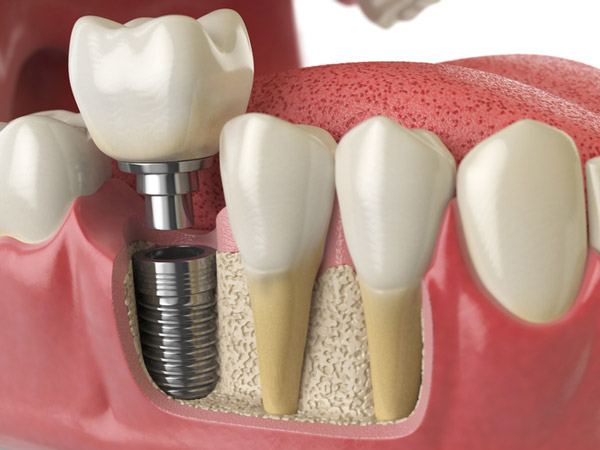Bone Graft
Naperville, IL
Bone Grafting provided by Dr. Michael Scherer
in Naperville, IL at Wheaton Oral Surgery
 A primary side effect of prolonged, untreated periodontitis (advanced gum disease) is bone loss. When this occurs, Wheaton Oral Surgery may recommend bone grafting prior to any other periodontal or orthodontic treatments. Depending on your specific needs, bone tissue for grafting can be taken from various areas of your body, a cadaver, an animal, or be made from synthetic materials. A primary side effect of prolonged, untreated periodontitis (advanced gum disease) is bone loss. When this occurs, Wheaton Oral Surgery may recommend bone grafting prior to any other periodontal or orthodontic treatments. Depending on your specific needs, bone tissue for grafting can be taken from various areas of your body, a cadaver, an animal, or be made from synthetic materials.
What Is Bone Grafting in Dentistry?
Periodontal bone grafting is a minimally invasive surgical procedure in which we use real or synthetic bone to help regrow areas of the jawbone. A surgical procedure complementary to bone grafting is guided bone regeneration (GBR). This involves placing a membrane over a bone graft site to trigger new bone growth.
Both of these procedures are typically needed for two main reasons. As mentioned, advanced gum disease that involves untreated tooth loss will often require bone grafting to make the jawbone stable for restorative procedures like dental implants. In order for the placement of implants to have long-term success, a sufficient height and width of the jawbone must be restored.
In addition, bone grafting can result in aesthetic improvement of your smile. Bone loss due to advanced periodontal disease can affect your appearance considerably. Once the jawbone begins shrinking, your face can take on a sunken and prematurely aged appearance.
How Does Gum Disease Cause Tooth Loss?
As your gums become more and more irritated from periodontitis and separate from your teeth, this forms deep pockets under the gumline where plaque and tartar collect. Without routine professional cleanings, this condition will eventually cause loss of bone and/or soft tissue. Because your body won’t naturally regrow bone, bone grafting is usually the only treatment option effective for restoring the jawbone in preparation for reconstructive dental work.
Request an Appointment
Bone Grafting and Dental Implants
Bone grafting in dentistry is not only designed to repair damaged bone, but to increase the chance of saving your teeth. Many times, however, bone loss will lead to tooth loss. This means that you will need dental implants to restore your bite and improve the look of your face and your smile. Dental implants are surgically placed into the jawbone to replace damaged tooth roots. They stand on their own and allow for either replacement teeth or a dental bridge.
What Are the Types of Bone Grafts?
There are four types of bone grafts for restoring your jawbone. Each type of graft differs by the source from which the bone for grafting is taken.
Autograft
This procedure involves using your own bone for the grafting procedure, typically taken from the back of the jawbone or from a hip bone.
Allograft
An allograft is when we use bone from a deceased human donor. This procedure is a safe alternative for a patient who isn’t a good candidate for an autograft.
Xenograft
For a xenograft, we use bone from an animal, usually a cow. This procedure has a slightly lower success rate than an autograft or allograft. Because the bone is from a different species, this procedure does not result in the stimulation of new bone growth.
Alloplast
For an alloplast procedure, we use synthetic material that consists of hydroxyapatite, calcium, and phosphorus. There is no risk of disease transmission with this procedure, and it can heal small defects on its own. Although, like a xenograft, it doesn’t stimulate the growth of new bone.
Schedule Your Appointment Today!
Wheaton Oral Surgery is a leader in performing all types of periodontal bone grafting with highly successful outcomes. If you would like more information about this procedure, call us at (331) 204-0314 to schedule a consultation. |
